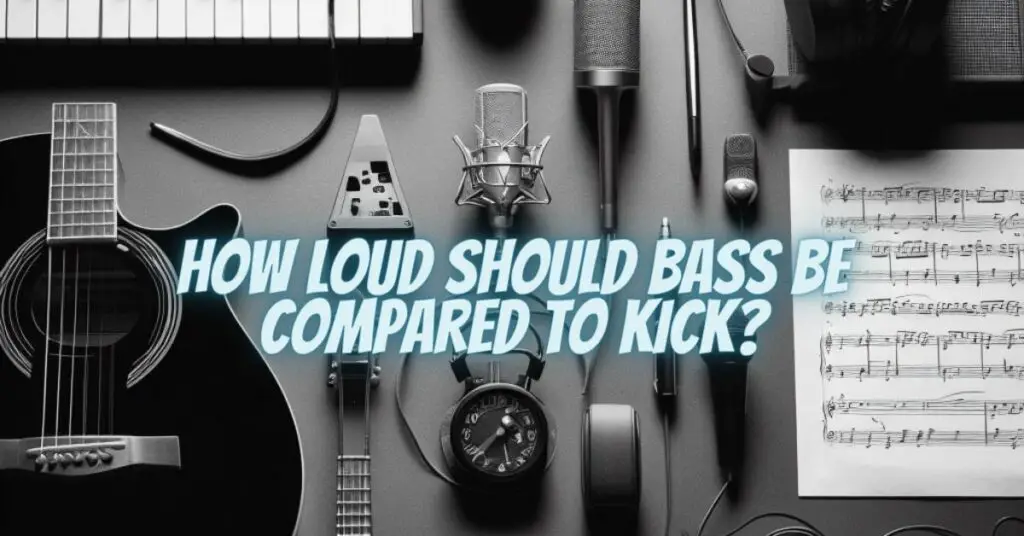The bass and kick drum are two of the most important elements in a mix. They provide the foundation for the rest of the track and can make a huge impact on the overall sound. One of the most important decisions you need to make when mixing is how loud each of these elements should be relative to each other.
There is no one-size-fits-all answer to this question, as the ideal balance will vary depending on the genre of music, the tempo of the track, and the overall vibe you’re trying to achieve. However, there are a few general guidelines that can help you get started.
Genre considerations
In general, electronic music genres like house, techno, and EDM tend to have louder bass than kick drum. This is because these genres are often characterized by a driving, four-on-the-floor beat, and the bass provides the low end that helps to propel the track forward.
On the other hand, hip hop and R&B tracks tend to have a more even balance between bass and kick drum. In these genres, the kick drum often plays a more prominent role in the beat, and the bass is used to provide support and fill out the low end.
Tempo considerations
Faster tempos tend to call for louder bass, while slower tempos tend to benefit from a more even balance between bass and kick drum. This is because the faster the tempo, the more important it is to have a strong bass line to keep the track moving. At slower tempos, the kick drum can play a more prominent role in the beat, and the bass can be used to add warmth and depth.
Vibe considerations
If you’re trying to create a dark and atmospheric track, you may want to increase the volume of the bass. This will help to create a sense of depth and space in the mix. On the other hand, if you’re trying to create a more energetic and upbeat track, you may want to increase the volume of the kick drum. This will help to give the track a more driving feel.
Tips for getting the balance right
Here are a few tips for getting the balance between bass and kick drum right:
- Start by listening to your track without any bass or kick drum. This will help you to get a sense of the overall balance of the track and identify any areas that need to be addressed.
- Add the bass and kick drum one at a time. This will help you to hear how each element affects the overall sound.
- Use a spectrum analyzer to visualize the frequency response of your track. This can help you to identify any areas where the bass and kick drum are clashing.
- Experiment with different ratios of bass and kick drum. There is no right or wrong answer, so it’s important to find what works best for your track.
The ideal balance between bass and kick drum will vary depending on the genre of music, the tempo of the track, and the overall vibe you’re trying to achieve. However, by following the tips above, you can get started on finding the right balance for your track.
Here are some additional tips to keep in mind:
- If you’re having trouble getting the bass and kick drum to sit together in the mix, try using a sidechain compressor. This will help to create space for each element in the mix.
- Be careful not to overdo the bass and kick drum. Too much bass and kick drum can make your track sound muddy and cluttered.
- Listen to your track on a variety of different speaker systems. This will help you to ensure that the bass and kick drum sound good on a variety of devices.
With a little practice, you’ll be able to find the perfect balance between bass and kick drum for your tracks.

